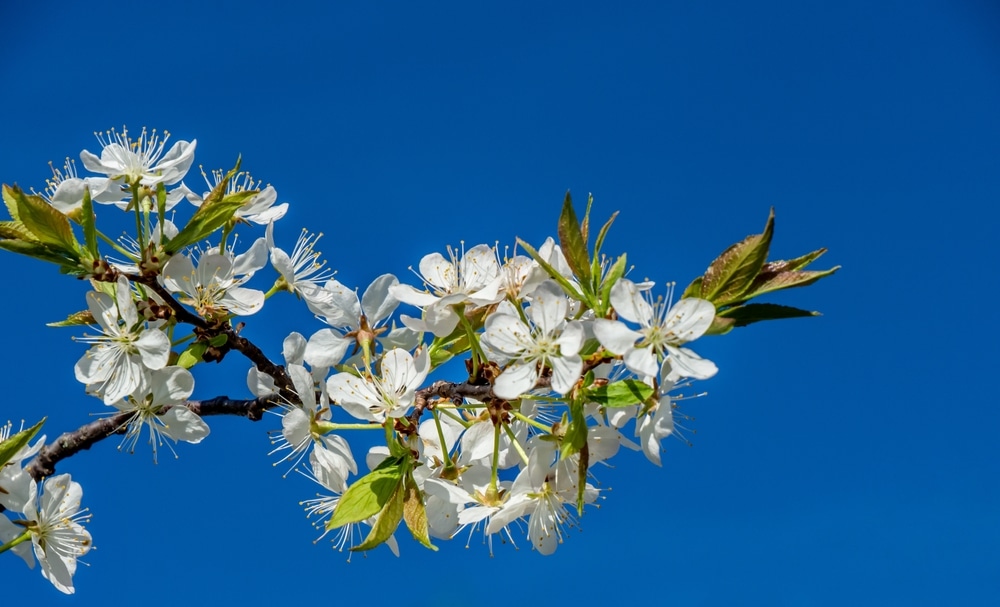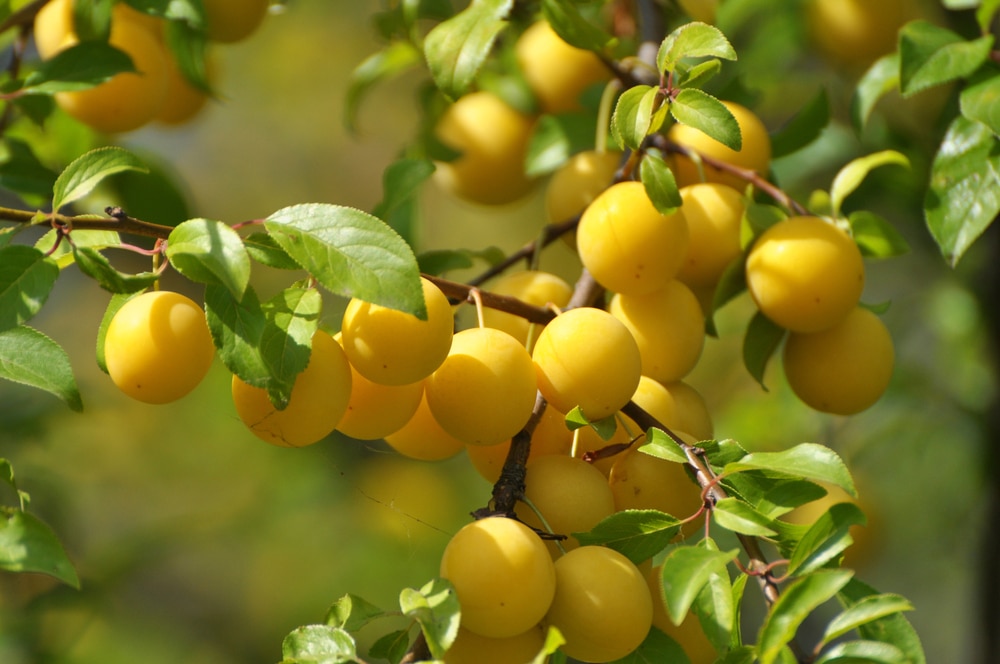Plum trees are gorgeous fruit-bearing trees that many people don’t consider when selecting foliage for their yard or garden. Whether you’re looking for attractive greenery to shade your space or enjoy indulging in delicious fruit, this tree is the perfect addition to nearly any home. Plus, few things are as fantastic as watching a plum tree bloom.
Blossoming Plum Trees
Plum trees are fruit-bearing plants. People have been enjoying this fruit tree for generations. It first got domesticated in Japan, and they used the fruits in various recipes, including alcohol. This plant is related to the cherry tree, which is likely why it looks similar.
When Do Plum Trees Bloom?
All varieties of plum trees produce flowers and fruit. However, many of these trees are not self-pollinators, so you will need at least two trees to see fruit.
The plum tree blooms from late winter to early spring, like the cherry tree. The flowers typically range from white to pink or even red. They are one of the first indicators that warm weather is here at last.
The fruit will grow throughout the summer and be ready for harvest anywhere from August to late October, depending on the variety. That can also be impacted by what zone you are in.
Where Do Plum Trees Grow?
Plum trees are highly adaptable and need very little maintenance once they get established. They are also very hearty whether they come from Japan or Europe. They can grow in nearly any zone with the proper care. As long as you reside in zones four through nine, plum trees should do just fine in your yard.
Not only are these trees easy to take care of, but they are also very compact. They rarely reach over 20 feet, making them suitable for small lawns and gardens.
Plum Tree Care
If you are interested in including one of these spectacular trees in your yard, you will need to know the best way to care for it. Making your home suitable for a plum tree isn’t tough to do.
Water
Plum trees don’t need water often. However, they need to get soaked through when you do. The roots grow deep, so you will need to give this tree up to 8 gallons of water once it is full-grown. Typically, this can be done every 10 to 14 days, depending on how dry the weather is. Less if it has been raining.
Light
Plenty of sunshine is what makes the plums sweet. To produce the most bountiful harvest, plum trees need full sun. You won’t want to plant them too near structures or other foliage that will compete for light. If you are interested in adding some companion plants to protect your plum tree and attract pollinators, here are a few great options:
- Foxglove
- Nasturtiums
- Marigolds
- Dill
- Chives
Soil
These trees prefer a simple, loamy soil that drains well. This selection will help to prevent water from sitting on the roots. Depending on the variety, it also does best in slightly acidic conditions, between 5.7 and 6.8 pH. Fortunately, you can find all the supplies for preparing your soil at most gardening centers.
Pruning
Essential grooming is all this plant needs to thrive. It’s best to do this in spring or summer with plum trees. There are several ways to prune your tree to achieve the desired shape, but the most important thing to do is to keep it healthy. That will include removing dead branches and checking the tree for weakness or disease.
Final Thoughts
Plum trees are lovely plants that can help boost your home’s curb appeal. A plum tree is an excellent option if you are interested in adding some color and variety to your yard.
You may also be interested in finding out how to identify a yellow plum tree.

